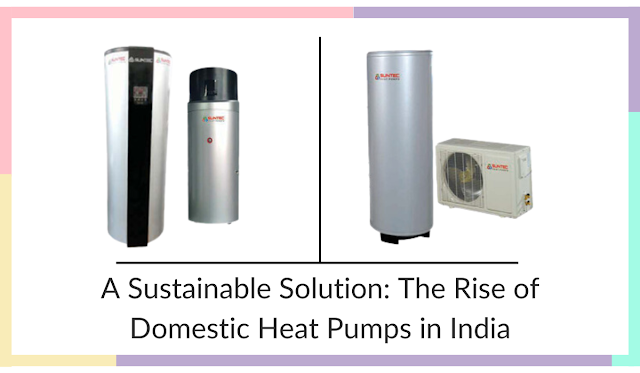A Sustainable Solution: The Rise of Domestic Heat Pumps in India
In the quest for sustainable living, India stands at a crucial juncture. With a rapidly growing population and increasing energy demands, the need for efficient and eco-friendly heating solutions has become more pressing than ever. Among the array of options, heat pumps have emerged as a promising technology offering both environmental benefits and economic advantages. This article delves into the landscape of Domestic Heat Pump in India, exploring the role of heat pumps as a sustainable alternative.
Understanding Heat Pumps
At the forefront of this transition are heat pumps, innovative devices capable of extracting heat from the environment and transferring it indoors for heating purposes. Unlike conventional heating systems that generate heat through combustion or electrical resistance, heat pumps leverage the principles of thermodynamics to provide efficient heating solutions.
Overview of the Need for Sustainable Heating Solutions in India
India's diverse climate, ranging from scorching summers to chilly winters, necessitates reliable heating solutions, particularly during the colder months. However, traditional methods of heating, such as burning biomass or using electric heaters, contribute significantly to air pollution and carbon emissions. With environmental concerns mounting and climate change becoming increasingly evident, there's a critical need to transition towards sustainable heating alternatives.
Explanation of Heat Pump Technology
Heat pumps operate on the principle of heat transfer, utilizing refrigerants and compressors to absorb heat from one source and release it into another. This process can be reversed to provide cooling during summers, making heat pumps versatile all-season solutions. Common components include evaporators, compressors, condensers, and expansion valves, working together to facilitate heat exchange.
Types of Heat Pumps Suitable for Domestic Use
Several types of heat pumps cater to different domestic heating needs, including air-source, ground-source (geothermal), and water-source heat pumps. While air-source heat pumps are most commonly used due to their affordability and ease of installation, ground-source heat pumps offer higher efficiency but require more extensive groundwork.
How Heat Pumps Work in the Context of Residential Heating
In residential settings, heat pumps extract heat from the ambient air or ground, intensify it through compression, and distribute it indoors via air ducts or radiant floor heating systems. The efficiency of heat pumps stems from their ability to transfer existing heat rather than generating it, making them significantly more energy-efficient than traditional heating methods.
Overview of Traditional Heating Methods in Indian Households
In India, traditional heating methods like burning wood, coal, or biomass are prevalent, especially in rural areas. While these methods provide warmth, they contribute to indoor and outdoor air pollution, posing health risks and environmental challenges. Additionally, electric heaters, although convenient, are energy-intensive and often rely on fossil fuels for electricity generation.
Benefits of Heat Pumps Compared to Conventional Heating Approaches
Heat pumps provide numerous benefits when compared to conventional heating methods, such as:
- Environmental friendliness: Heat pumps generate lower greenhouse gas emissions in contrast to combustion-based systems.
- Energy efficiency: By leveraging ambient heat, heat pumps consume less electricity, resulting in lower energy bills.
- Safety: Unlike combustion-based heaters, heat pumps eliminate the risk of indoor air pollution and carbon monoxide poisoning.
- Versatility: Heat pumps can provide both heating and cooling, offering year-round comfort.
Economic Benefits for Homeowners
While the initial investment in a heat pump system may be higher than traditional heaters, homeowners can recoup costs through energy savings over time. Additionally, government incentives and subsidies for renewable energy technologies further enhance the financial viability of heat pumps.
Challenges and Barriers
Despite their potential, the widespread adoption of heat pumps faces several challenges, including high upfront costs, lack of awareness, and technical barriers. Furthermore, the availability of skilled technicians and suitable infrastructure for heat pump installation and maintenance remains limited in many regions.
Implementation Strategies
To overcome these barriers, concerted efforts are needed from policymakers, industry stakeholders, and the community. Strategies may include:
- Raising awareness through education and outreach programs.
- Providing financial incentives and subsidies to promote adoption.
- Developing standards and certifications for heat pump installation and maintenance.
- Investing in training programs to build a skilled workforce in renewable energy technologies.
Future Outlook
As awareness grows and technology advances, the future of heat pumps in India appears promising. Continued innovation, coupled with supportive policies and market incentives, could drive significant growth in the adoption of heat pump systems across residential and commercial sectors.
Conclusion
In conclusion, heat pumps represent a sustainable solution to India's heating needs, offering energy-efficient, environmentally friendly alternatives to traditional heating methods. By embracing this technology and addressing existing barriers, India can move closer to its goal of achieving a cleaner, greener future for generations to come.




Comments